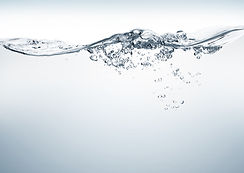

WHAT’S IN YOUR WATER?
I wanted to take a moment to sincerely thank Sasha Jones for the opportunity to be part of her NBC series on such an important topic—
drinking water safety. Her thoughtful questions and dedication to raising awareness are truly appreciated, and I'm honored to have
contributed to the discussion.
I'm also incredibly grateful for the wonderful shout-out she gave to Residents for Resilience (R4R). Her support means a lot to us, and it will certainly help amplify our mission to improve water safety and resilience in our communities.
I look forward to following her impactful work!
Watch segment below.

View below -


New report warns about human health risks from PVC pipes used in drinking water systems
USA TODAY
IS IT SAFE TO
DRINK THE WATER?
When it comes to drinking water, how many of you are concerned about the contaminants in your glass of water? We must ask ourselves: is it safe to drink the water?
The Fort Lauderdale Commission has approved a new billion-dollar water plant that promises to provide higher quality drinking water. But what happens to that quality as it travels through potentially contaminated, antiquated pipes to our homes?
Did you know that according to many studies, Broward County has one of the highest advanced late-stage breast cancer rates in Florida, and some studies suggest the entire U.S.? Some experts believe these alarming numbers could be linked to higher-than-normal levels of arsenic, glyphosates (a common ingredient in weed killers), and let’s not forget forever chemicals like PFAS and plastics.
Another concern is saltwater intrusion into our aquifers due to rising sea levels.
Did you know Florida has over 150 desalination plants to address this issue?
While residents can't control the quality of drinking water traveling to their homes, they can manage the quality that comes into their homes.
That's why R4R recommends reverse osmosis systems and carbon filters.
Reverse osmosis (RO) is generally considered better than carbon filtration for drinking water because it can remove a significantly wider range of contaminants, including dissolved solids, bacteria, viruses, heavy metals, and many chemicals, while carbon filters primarily focus on removing chlorine and improving taste, leaving many other contaminants untouched;making RO a more comprehensive purification method.
Key points to consider:
-
Contaminant removal:
RO systems utilize a semi-permeable membrane that filters out much smaller particles, allowing them to remove a broader spectrum of contaminants compared to carbon filters.
-
Mineral removal:
While carbon filters may leave some beneficial minerals in the water, RO systems often remove most minerals, which can be a concern for some people.
-
Effectiveness against harmful contaminants:
RO is particularly effective at removing harmful contaminants like lead, bacteria, and pesticides, which carbon filters may not fully eliminate.
-
Taste and odor improvement:
While carbon filters excel at removing chlorine and improving taste, they may not address other odor-causing compounds that RO can remove.
Reverse Osmosis -
if you need high purity water, especially in areas with heavy contamination or
if you have specific health concerns.
Carbon Filters -
for general use, especially if you're mainly concerned with taste and chlorine removal,
and if you want a more cost-effective solution.
Chloramines are best removed from water by catalytic carbon filtration, ultrafiltration, and reverse osmosis. Catalytic carbon, activated carbon with an enhanced capacity for contaminant removal, is one of the few filtration media that can successfully reduce chloramines from drinking water.
In many cases, a combination of both systems can be used to maximize water quality.
R4R does not support or endorse any specific type of filtration system.
We have provided links below to many of the articles and various websites we visited, to help you gather thorough information, so that you can make an informed decision on the options that work best for you. Cheers!




Our Top Reverse Osmosis System Picks You'll Want to Grab Now
Filter up to 99 percent of impurities from your drinking water
By
Updated on 12/05/24








Reverse Osmosis (RO) water filtration is highly regarded as the most convenient and effective method on the market for purifying drinking water. It works at the molecular level to eliminate up to 99% of common impurities and dangerous contaminants from water, such as chemicals, bacteria, metal, dirt and other organic compounds.
As with any type of water filter, RO systems have many benefits and limitations. Before installing an RO water filtration system, it is important to understand how they work and where you can place them within your home to ensure compatibility and optimum efficiency.
This guide provides an explanation of the 10 best RO water filters on the market in 2024. We’ll also list the pros and cons of RO filters, explain what you need to know before purchasing a reverse osmosis water filter for your home and answer commonly asked questions about how reverse osmosis works and how they rank in comparison to other types of water filters.








The water that comes out of your household tap travels through miles of pipes, aquifers, and treatment systems before landing in your glass. One of the easiest ways to boost the quality of that water is by using a water filter, be it under your sink, in your fridge, or on your countertop.
While many people buy water filters simply to improve the taste or appearance of their tap water, filtering your drinking water can also potentially protect you from harmful contaminants.



















